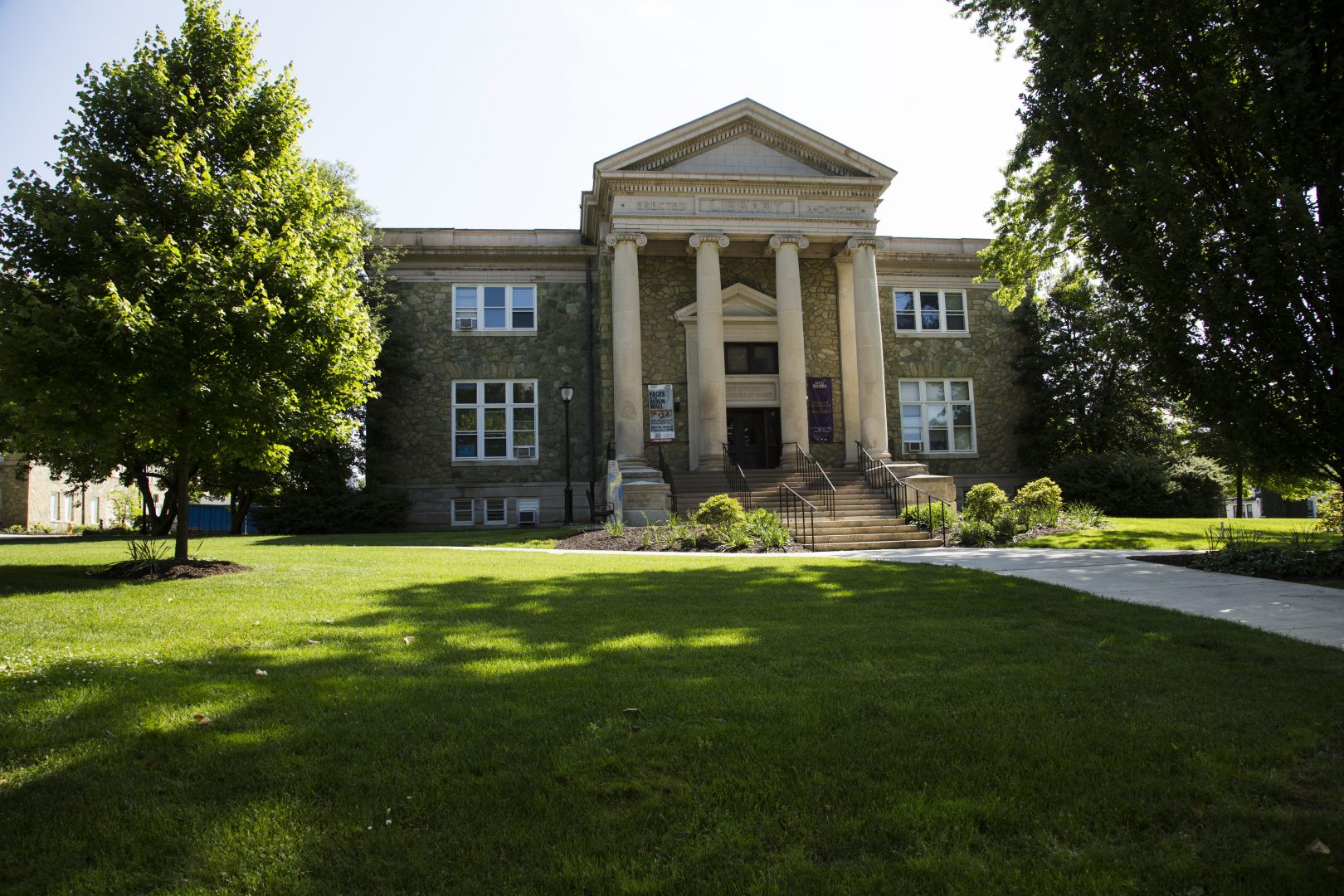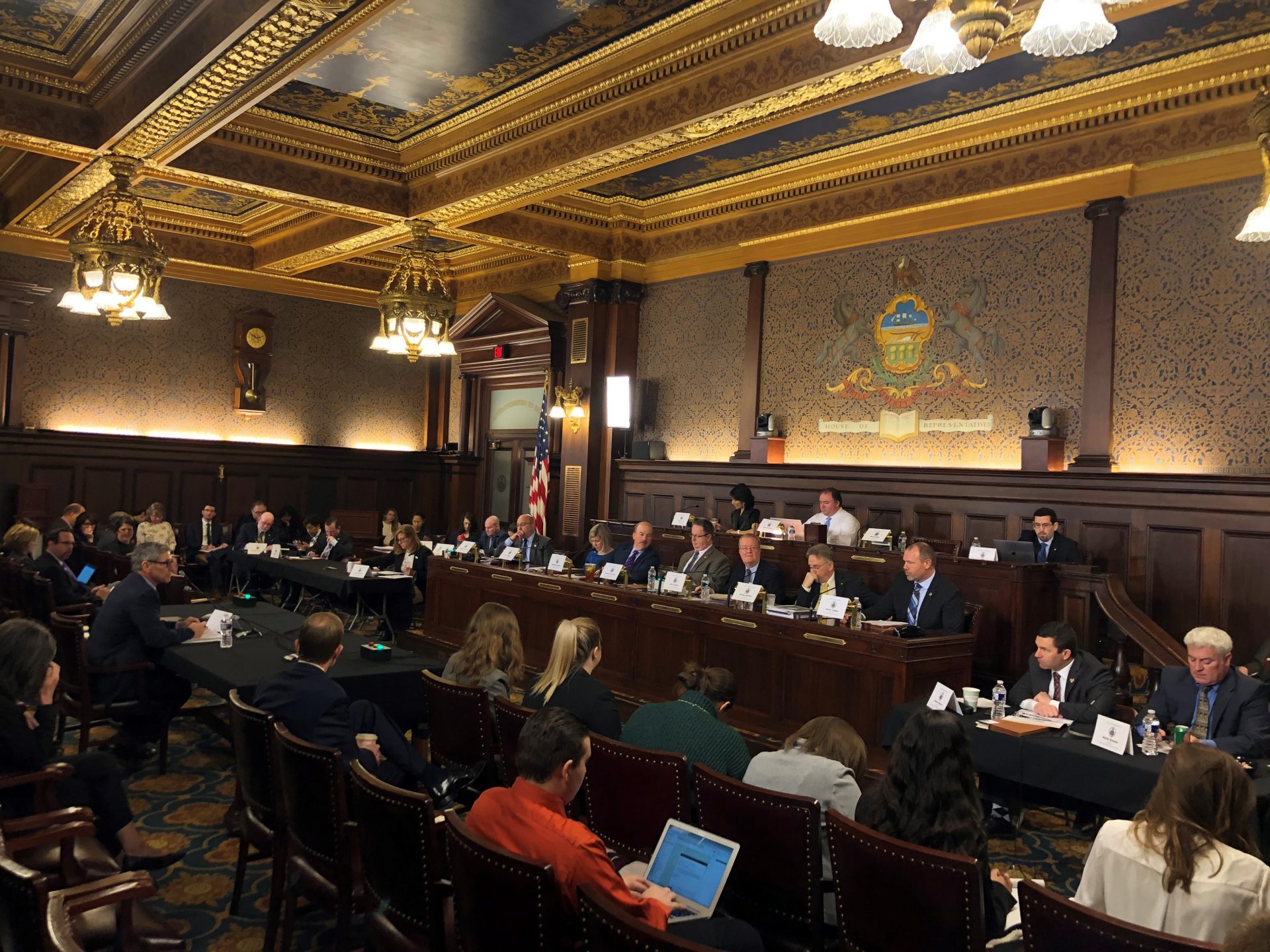
Shown is West Chester University in West Chester, Pa., Friday, May 31, 2019. (AP Photo/Matt Rourke)
AP Photo / Matt Rourke

Shown is West Chester University in West Chester, Pa., Friday, May 31, 2019. (AP Photo/Matt Rourke)
AP Photo / Matt Rourke

AP Photo / Matt Rourke
Shown is West Chester University in West Chester, Pa., Friday, May 31, 2019. (AP Photo/Matt Rourke)

Ed Mahon / PA Post
State System of Higher Education Chancellor Daniel Greenstein testifies before the House Appropriations Committee on March 3, 2020, in the state Capitol in Harrisburg, Pa. (Ed Mahon / PA Post)
Enrollment at Pennsylvania’s 14 state-owned universities has declined by 20 percent since the fall of 2010.
That falling enrollment looms large as lawmakers in Harrisburg look at how much to spend on universities in next year’s state budget.
“Our education is increasingly unaffordable,” Daniel Greenstein, chancellor for the State System of Higher Education, said during a House budget hearing on Tuesday. “…This is a direct reflection of funding levels.”
Greenstein told lawmakers that if state funding had kept up with inflation over the past 15 years, state-owned universities would receive almost $200 million more a year.
In February, Democratic Gov. Tom Wolf proposed a nearly $13 million increase for the system, which would raise the general fund appropriation to more than $490 million.
Greeinstein is asking for about $507 million, including a special allocation of $20 million that Greenstein said would be used to combine some administrative functions across the state system, making it easier for students at one university to take classes at another.
“It provides an opportunity to be much more nimble and much more responsive to the workforce development needs of the state,” Greenstein said.
Thirteen of the 14 state-owned universities saw an enrollment decline over the past decade. The exception was West Chester University in Chester County, which saw its enrollment increase from 14,490 to 17,961. For a student from Pennsylvania, the average cost to attend a state-owned university is about $22,000 a year, including tuition and fees.
During Tuesday’s hearing, state Rep. George Dunbar (R-Westmoreland) asked Greenstein if he would rather have lawmakers approve the $20 million for the administrative efficiency effort, or the $200 million scholarship program that Democratic Gov. Tom Wolf has proposed for students at state-owned universities.
Greenstein called that a “Sophie’s choice.” But he chose the money for the redesign. He said the governor’s proposal addresses a larger affordability issue.
In order to pay for the scholarship proposal, Wolf wants to take money away from the race horse industry.
State Rep. Matt Bradford (D-Montgomery) said the governor deserves credit for making the proposal, noting that the state system reported a growing gap in enrollment between lower- and higher-income students from 2011-12 to 2017-18.
During that period, enrollment increased by 11 percent for undergraduate, in-state students from families with incomes greater than $110,000.
Meanwhile, the number of undergraduate, in-state students from families with income less than $110,000 decreased by nearly 23 percent.
“Those who most need it are the ones who we’re losing,” said Bradford, the ranking Democrat on the House Appropriations Committee.
Other lawmakers focused more on the cost to taxpayers of the state-owned schools. Only about 31 percent of people over 25 in Pennsylvania have a bachelor’s degree or higher, according to U.S. Census data.
“When we tax them, we’re asking people that don’t have the college degree to pay for someone else’s college,” said state Rep. Greg Rothman (R-Cumberland). “And I just want to be sensitive to that.”

Sometimes, your mornings are just too busy to catch the news beyond a headline or two. Don’t worry. The Morning Agenda has got your back. Each weekday morning, host Tim Lambert will keep you informed, amused, enlightened and up-to-date on what’s happening in central Pennsylvania and the rest of this great commonwealth.
The days of journalism’s one-way street of simply producing stories for the public have long been over. Now, it’s time to find better ways to interact with you and ensure we meet your high standards of what a credible media organization should be.